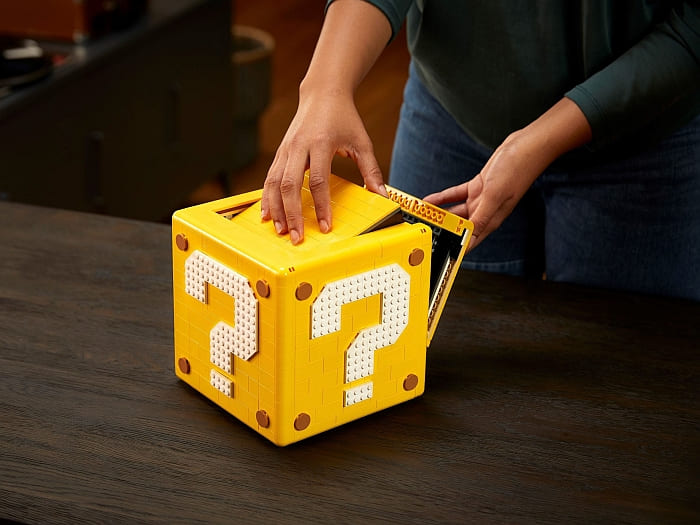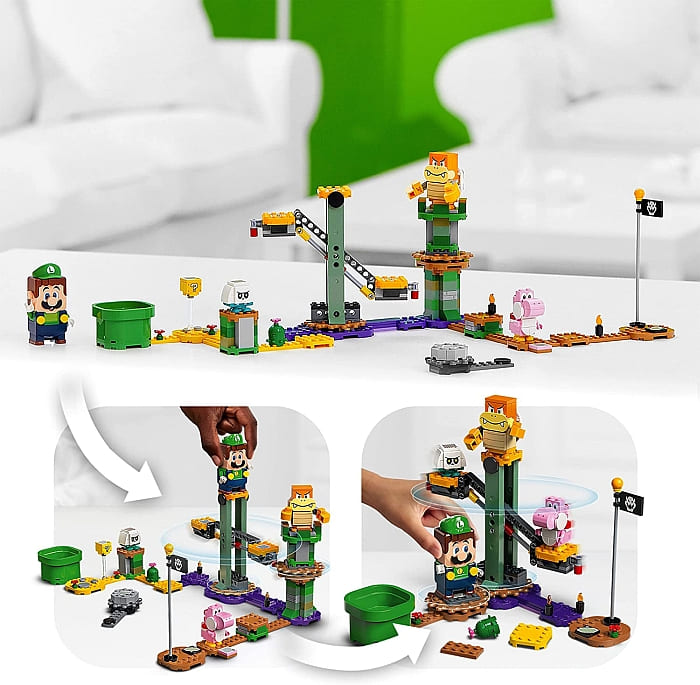A new LEGO Super Mario set was unceremoniously added to the Online LEGO Shop, but it’s totally worth checking out. The #71395 LEGO Super Mario 64 Question Mark Block is a very interesting set with unusual surprises. Below are the details.


Rekindle fond memories as you build, display, and play with the #71395 LEGO Super Mario 64 Question Mark Block. Twenty-five years on from the launch of the Super Mario 64 video game, this set features a brick-built Question Mark Block that opens to reveal instantly recognizable levels from the game: Peach’s Castle, Bob-omb Battlefield, Cool, Cool Mountain, and Lethal Lava Trouble. There are also 10 micro-figures of iconic characters to place in the detailed scenes.

INTERACTIVE PLAY
A delightful gift for any Super Mario fan, the set comes with step-by-step building instructions. For interactive play, add a LEGO Mario figure from the #71360 LEGO Super Mario Starter Course or Luigi from the #71387 LEGO Super Mario Starter Course (sold separately), and collect 10 hidden Power Stars to reveal secret reactions and more.


 LIMITLESS POSSIBILITIES
LIMITLESS POSSIBILITIES
The LEGO Super Mario range includes Starter Courses, Expansion Sets, and Power-Up Packs, allowing builders to expand, rebuild, and create unique levels.
- Pay tribute to the classic Super Mario 64 video game in LEGO style with this brick-built version of the Question Mark Block for display and interactive play.
- Includes 10 LEGO Super Mario micro-figures: Mario, Yoshi, Princess Peach, and King Bob-omb, as well as a Chain Chomp, Big Bully, Mr. I, Lakitu, penguin, and baby penguin.
- The Question Mark Block measures over 7 in. (18cm) high, wide, and deep, and opens to reveal 4 detailed Super Mario 64 levels: Peach’s Castle, Bob-omb Battlefield, Cool, Cool Mountain, and Lethal Lava Trouble.
- This collectible, 2,064-piece LEGO building set makes a cool birthday present, holiday gift, or surprise treat for fans of Super Mario 64, any gaming fan, and lovers of all things retro.
- Step-by-step instructions are included with this set so even a LEGO Super Mario fan who is a newcomer to LEGO sets can build with confidence and enjoy the process.
- This LEGO Super Mario set is part of a collection of premium-quality LEGO building kits designed for adults who enjoy fun, creative, DIY projects.


The #71395 LEGO Super Mario 64 Question Mark Block is going to be available starting on October 1st for $169.99 at the LEGO Super Mario section of the Online LEGO Shop.

What do you think? How do you like this new LEGO Super Mario set? Are you planning to get it? Do you have any of the other LEGO Super Mario sets? Feel free to share your thoughts and discuss in the comment section below!
And you might also like to check out the following related posts:













